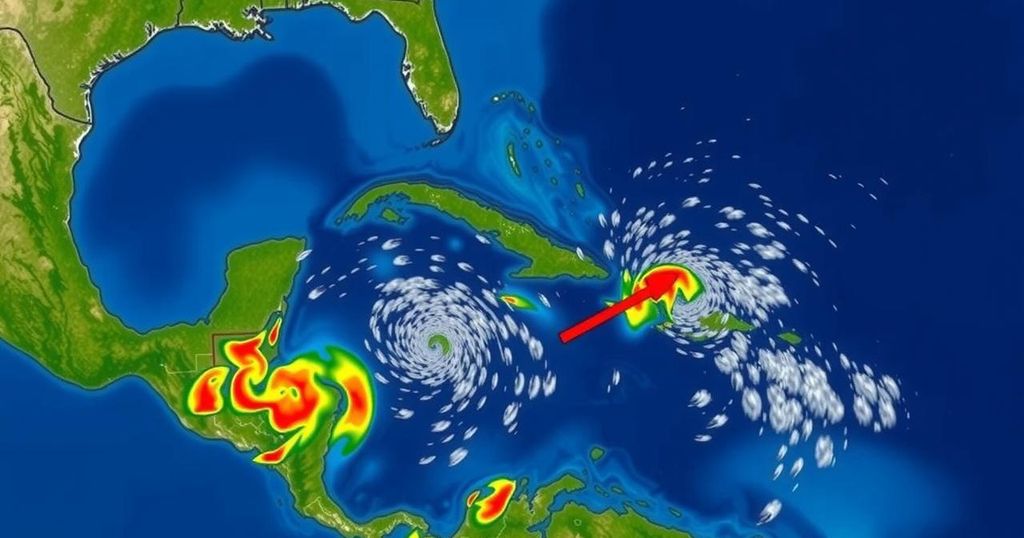Hurricane experts assess the potential for a low-pressure system in the Central Atlantic to develop into Tropical Storm Nadine. Currently, chances of formation are low, with a 20-30% probability over the next week. Strong upper-level winds are expected to limit development. The storm is projected to move near Puerto Rico and the Dominican Republic but is unlikely to affect Florida due to a high-pressure system in place.
As Tropical Storm Nadine potentially looms, hurricane experts have assessed the likelihood of development from a low-pressure system currently situated in the Central Atlantic. The National Hurricane Center (NHC) reports a 20 percent chance for this system to evolve into a tropical cyclone within the next 48 hours and a 30 percent chance within the week. However, the disturbance remains disorganized, with chances of development diminishing due to strong upper-level winds expected by the weekend. While the NHC categorizes a storm as a tropical depression when it develops over warm ocean waters and achieves organized wind circulation with speeds up to 38 mph, classification as a tropical storm occurs with wind speeds between 39 and 73 mph. Wind speeds exceeding 74 mph classify a storm as a hurricane, and those reaching Category 3 or higher are deemed major hurricanes. Prominent meteorological figures, including Brian Tang, associate professor at the University at Albany, explain that current forecasts indicate meager odds for formation given the chaotic conditions surrounding it. As Tang elucidates, a 20 to 30 percent chance of development indicates limited potential for intensification into a notable storm over the forthcoming days. Annalisa Bracco, a professor at the Georgia Institute of Technology, elaborated on the essential conditions conducive to storm growth, highlighting the importance of warm sea surface temperatures, minimal wind shear, and well-stratified ocean layers. While there have been occurrences of storms rapidly intensifying in the past, such as Hurricane Milton, the environmental conditions for this particular system do not appear favorable, particularly with anticipated increasing upper-level winds. Nicholas Grondin from the University of Tampa notes that despite a stagnant development phase, it remains within the realm of possibility for the storm to strengthen if it encounters better conditions as it progresses. However, current forecasts suggest a path directing the storm toward Puerto Rico and surrounding territories, while remaining unlikely to impact Florida due to a prevailing high-pressure system. The potential development poses a lower threat to Florida’s residents, with Tang asserting that immediate concerns should be minimal. Though he acknowledges the possibility of increased intensity could bring about rain and wind problems to Florida, especially in regions still recovering from Hurricanes Milton and Helene, extensive damage is not anticipated at this stage. The hurricane community remains vigilant and will continue to monitor this system.
The article discusses the potential development of Tropical Storm Nadine from a low-pressure system in the Central Atlantic. It examines meteorological evaluations regarding the likelihood of the system generating significant storm activity. The National Hurricane Center provides forecasts on the chances of the system developing into a tropical cyclone, alongside expert opinions on the necessary conditions for storm intensification. The discussion also extends to the implications of the storm’s path and potential impact on affected areas, particularly Florida.
In summary, although the low-pressure system in the Central Atlantic has the potential to strengthen into Tropical Storm Nadine, experts indicate that the conditions currently surrounding the system are less than favorable for significant development. With low chances for intensification, potential impacts on regions like Florida appear minimal at this point. Continuous monitoring of the situation is essential, as forecasts may evolve depending on future environmental conditions.
Original Source: www.newsweek.com






